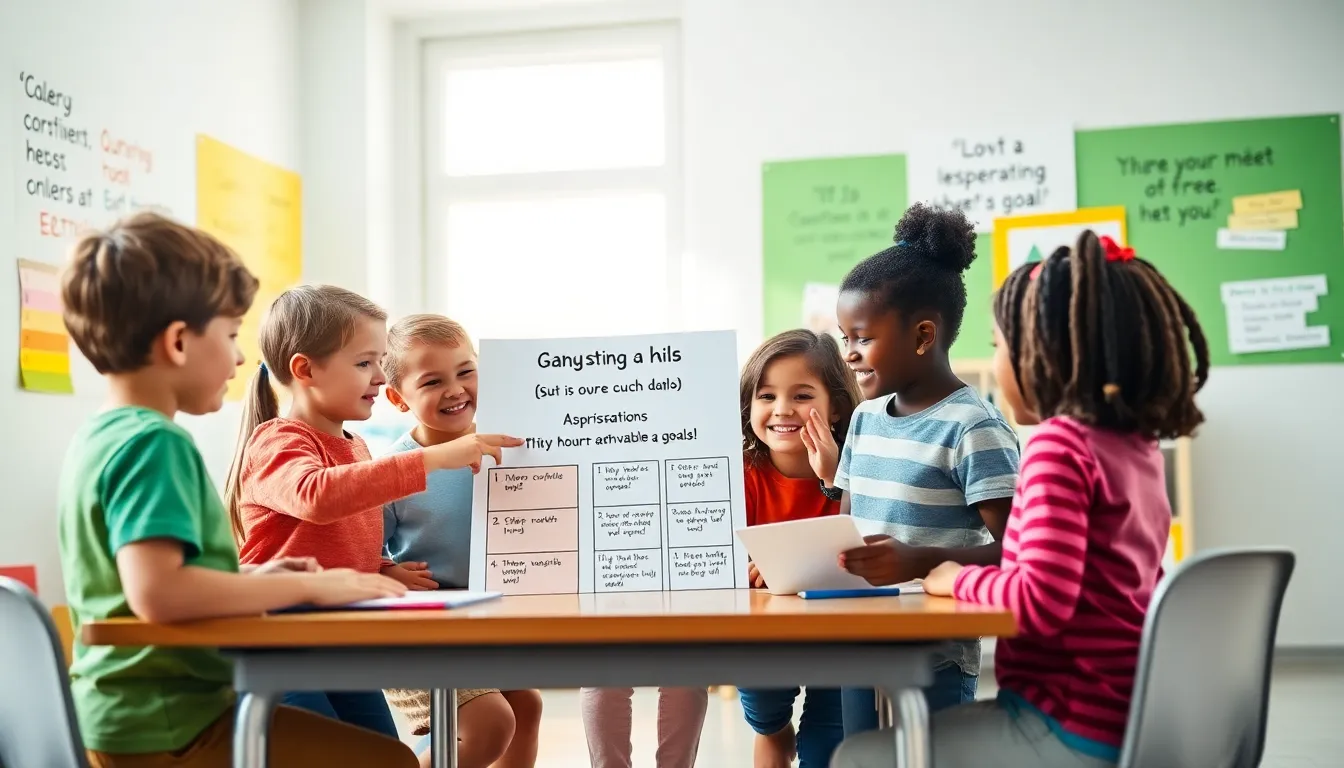Imagine a world where children aren’t just dreaming big, but actively achieving those dreams. Sounds like magic, right? Well, it’s not. Goal setting can transform wishful thinking into actionable plans. Among the key tools in this transformation is the goal setting worksheet for kids. This simple yet powerful sheet can help them not only identify their aspirations but also turn them into reachable milestones. So, why should you care? Because the sooner kids learn to set attainable goals, the more empowered they become. And who wouldn’t want their child to feel like a superhero in their own life? Let’s jump into the wonderful world of goal setting and unlock your child’s true potential.
Table of Contents
ToggleUnderstanding The Importance Of Goal Setting For Kids

Goal setting isn’t just for adults in suits discussing quarterly reports. Kids can benefit significantly from learning to set goals too. It instills a sense of direction, fosters motivation, and builds problem-solving skills. When children set goals, they learn to prioritize their tasks and manage their time effectively. Consider this: a child who dreams of becoming a star athlete can set goals to practice daily, join a local team, or improve specific skills. These goals guide the child’s actions, bridging the gap between a dream and reality.
Also, goal setting enhances self-esteem. When kids see their progress, even in small increments, they gain confidence. Celebrating those victories, no matter how minor, teaches them resilience and perseverance. So, in a nutshell, teaching children to set and achieve goals isn’t just about reaching the finish line. It’s about building a healthy mindset that will benefit them throughout their lives.
Types Of Goals Kids Can Set
Kids can set a wide range of goals tailored to their interests, and it’s essential to help them identify which areas to focus on.
Academic Goals
These might include improving grades in a specific subject, completing reading assignments on time, or even aiming for a perfect attendance record. Academic goals cultivate discipline and learning engagement.
Extracurricular Goals
Involvement in activities outside of school, like sports, music, or arts, can also inspire goal setting. Goals in these areas might involve mastering a musical piece, scoring a certain number of points in a game, or completing a painting.
Personal Development Goals
Children can also set personal development goals. These may focus on character building, such as being more patient, making new friends, or showing kindness more frequently.
Encouraging children to explore different types of goals allows them to discover their passions and strengths.
How To Use The Goal Setting Worksheet
A well-designed goal setting worksheet can serve as a roadmap for children on their journey of achieving dreams. Here’s how to effectively use this valuable tool.
Step-By-Step Guide To Setting Goals
- Identify the Goal: Start with a clear definition of what the child wants to achieve. This could be anything from reading a certain number of books to learning a new skill.
- Break It Down: Divide the goal into smaller, manageable tasks. If the main goal is to improve grades, smaller tasks might include studying for 30 minutes each day or asking for help when needed.
- Set a Timeline: Establish deadlines. This keeps the child motivated and accountable. If their goal is to read five books in a month, setting a weekly target can be helpful.
- Track Progress: Regularly check in to mark progress. This may involve checking off completed tasks or reflecting on what has been learned along the way.
Making Goals SMART
To ensure these goals are effective, introduce the SMART criteria. Specific, Measurable, Attainable, Relevant, and Time-bound. Instead of saying, “I want to be better at math,” a SMART goal would be, “I will practice math problems for 20 minutes every day for the next month.” This structured approach clarifies intentions and boosts commitment.
Tips For Encouraging Kids To Set Goals
It’s vital to create a supportive environment where goal setting is encouraged. Here are some tips:
- Lead by Example: Share your own goals and the steps you take to achieve them. Kids learn best through observation.
- Celebrate Successes: No matter how small the achievement, celebrate these milestones. Positive reinforcement builds confidence.
- Be Patient: It may take time for children to become proficient in setting and achieving goals. Patience is vital.
- Encourage Reflection: After completing a goal or task, have a discussion about what worked, what didn’t, and what they’ve learned.
- Create a Vision Board: Kids love visuals. A vision board filled with images representing their goals can keep them motivated.
Goals should feel exciting, not overwhelming, so maintaining a positive tone can significantly help.
Creating A Reflection Phase
Reflection is a crucial element of the goal-setting process, often overlooked. Encouraging children to reflect on their experiences helps them internalize lessons learned.
- Journaling: Encourage kids to keep a journal of their goal-setting journey. What did they find enjoyable? What challenges arose? Writing down their thoughts helps clarify feelings.
- Discussion Time: Set aside moments to talk about their experiences. Ask open-ended questions to guide the conversation. For instance, asking, “What did you find challenging about reaching that goal?” opens the door for deeper reflection.
- Adjust Goals: Reflection can also lead to goal adjustments. If a child faced repeated difficulties, it might be time to modify the goals for better alignment with their current abilities and motivations.
Resources And Tools For Goal Setting
Utilizing various resources can significantly enhance the goal-setting experience for children.
- Worksheets and Templates: Many websites offer downloadable templates specifically designed for kids. These often include colorful designs and fun layouts that engage children effectively.
- Books: Consider age-appropriate books that teach goal-setting concepts through stories. Titles like “The 7 Habits of Highly Effective Teens” can provide relatable insights.
- Apps and Digital Tools: There are several apps to help kids track progress, set reminders, and visualize goals. Look for kid-friendly apps that are both engaging and educational.
- Support Groups: Local or online groups focused on children’s development can provide community support and shared resources, making the journey enjoyable.









